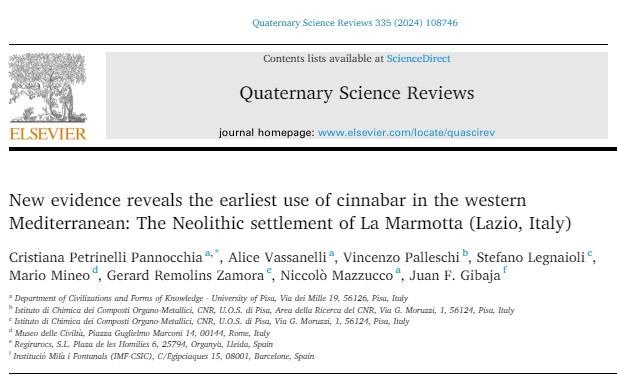
A study by the University of Pisa, led by C. Petrinelli Pannocchia as part of the research project on the site “La Marmotta,” directed by M. Mineo, N. Mazzucco, and J. F. Gibaja, has demonstrated that cinnabar was used as a dye as early as 7500 years ago.

Numerous researchers point out the emergence of human symbolism is related to the evolution of the complexity of human cognition. Red mineral pigments have been used extensively, particularly with anatomically modern humans, for various purposes. However, the management and supply of these pigments during prehistoric periods remains poorly investigated. Still today, the limited application of physico-chemical analyses often leads to a simplistic attribution of these pigments as ochre. The studies of data from recent literature presented in our paper show a progressive introduction and exploitation of cinnabar ore, to achieve a red pigment, from the seventh millennium BC. In this panorama, the new data obtained from the analyses of samples of artefacts from La Marmotta (Italy) show a wide use of cinnabar in central Italy from the early Neolithic and attest to the earliest use of this ore in the western Mediterranean area.
Pannocchia, Cristiana Petrinelli, et al. “New evidence reveals the earliest use of cinnabar in the western Mediterranean: The Neolithic settlement of La Marmotta (Lazio, Italy).” Quaternary Science Reviews 335 (2024): 108746. https://doi.org/10.1016/j.quascirev.2024.108746

